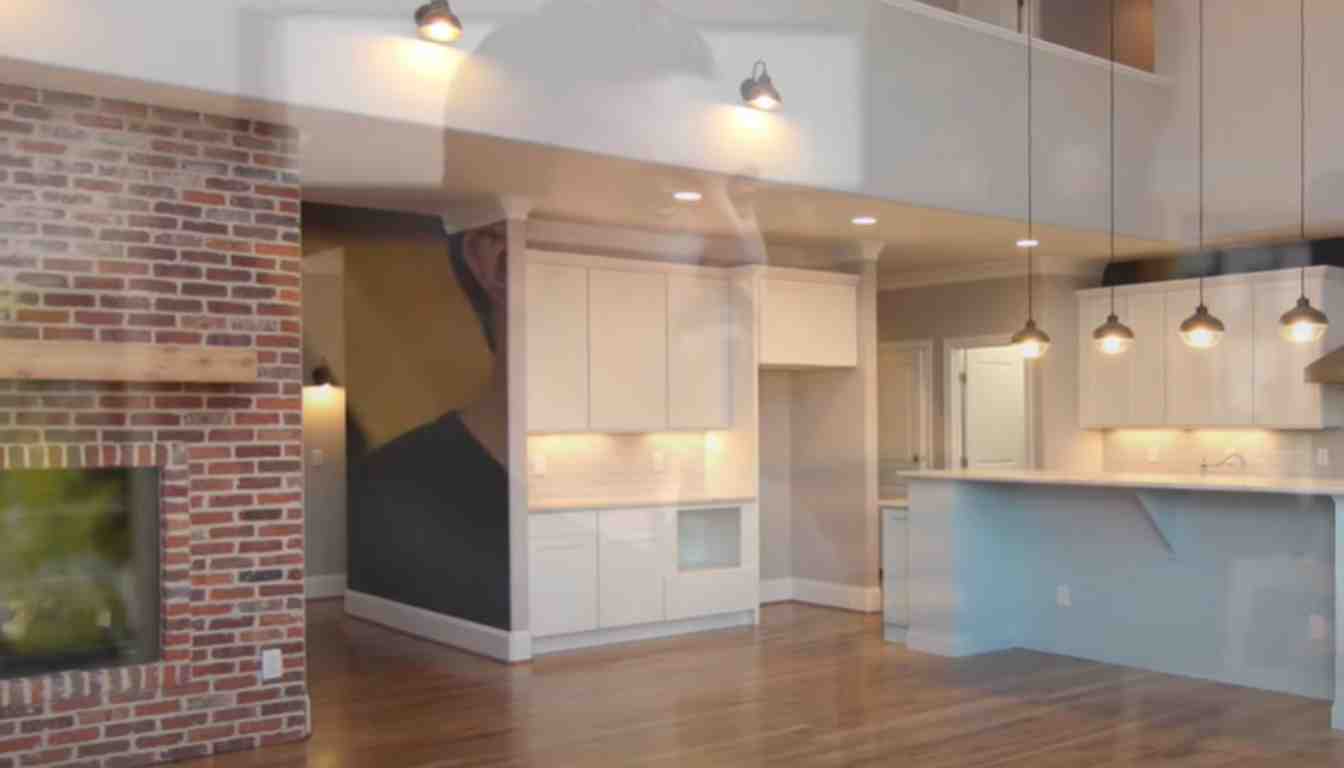Wood floors should run parallel to the longest wall for a visually appealing and spacious look. This orientation creates a sense of continuity in the room and enhances the flow of the space, making it appear larger and more inviting.
By aligning the wood planks in this manner, you can achieve a harmonious and balanced aesthetic that complements the overall design of the room. Additionally, laying the flooring in the direction of the longest wall can help streamline the installation process and minimize waste, resulting in a more cost-effective and efficient project.
Ultimately, the direction in which wood floors run can significantly impact the visual impact of a space and should be carefully considered during the design and planning phase.
Ideal Direction For Wood Floors
When deciding the direction of wood floors, it’s essential to consider the optimal layout for your space. The right direction can enhance the visual appeal and flow of the room. Here, we will delve into the factors to consider and the importance of flow and visual impact when determining the ideal direction for wood floors.
Factors To Consider
- Room Shape: Consider the shape of the room before choosing the direction.
- Natural Light: Assess the direction of natural light to determine the best flow.
- Architectural Features: Take into account any architectural elements that can influence the direction.
- Functional Layout: Ensure the wood flooring runs in a way that complements the room’s layout.
Importance Of Flow And Visual Impact
- Visual Perception: The direction of wood floors can affect the perception of space and size.
- Room Continuity: Creating a seamless flow enhances the overall aesthetic of the room.
- Elongating Effect: Running the planks lengthwise can make a room appear larger.
- Furniture Placement: Consider how furniture will be arranged in relation to the wood grain.

Credit: www.aarp.org
Key Considerations
When deciding the direction for wood floors, consider the layout and flow of the room, light source, and architectural features. Choosing parallel to the longest wall can visually lengthen the space, while perpendicular installation can add visual interest and create a dynamic feel to the room.
Room Shape and Size
When choosing the direction for wood floors, consider the room’s shape and size.
Large rooms can benefit from running the flooring parallel to the longest walls.
In smaller rooms, running the wood planks along the width can create a sense of spaciousness.
Consider the visual impact of the flooring direction on the overall room layout.
Natural Light and Entry Points
Determine the location of natural light sources and entry points in the room.
Running wood floors perpendicular to natural light can create a seamless flow of light.
Aligning the flooring with the main entryway can enhance the room’s aesthetic appeal.
Ensure the wood grain direction complements the room’s natural light and entry points.
Practical Tips
Avoiding Awkward Transitions
When laying wood floors, it’s important to consider the flow of the space. Avoiding awkward transitions between rooms is key to achieving a harmonious look. To do this, ensure the direction of the wood planks remains consistent throughout connected spaces. This will provide a smooth and seamless transition, creating a visually pleasing effect and preventing any jarring changes in pattern or direction.
Maintaining Consistency In The Home
To maintain consistency in the home, consider the overall layout and architecture. The direction of the wood floors should align with the longest walls of the room. This helps to visually elongate the space and create a sense of continuity. Furthermore, keeping the wood planks running in the same direction throughout the home can contribute to a cohesive and unified feel, enhancing the overall aesthetic appeal of the living environment.
Expert Recommendations
Interior Design Perspectives
When it comes to choosing the direction in which to lay your wood flooring, expert recommendations can provide valuable insights. One important consideration is the perspective of interior design. The direction you select can have a significant impact on the overall aesthetic appeal of your space. It can create a sense of flow, highlight architectural features, and even visually enhance the size of a room.
To achieve a visually pleasing result, interior designers often recommend aligning the wood flooring with the longest wall in the room. This choice can create a sense of depth and make your space appear more expansive. When the flooring is laid parallel to the longest wall, the uninterrupted lines can enhance the spaciousness of the room. Additionally, when you align the flooring with the longest wall, it can help to create a natural flow throughout the space, leading the eye along the length of the room.
Nevertheless, it’s worth noting that some interior designers prefer to deviate from this traditional approach and opt for a more unconventional direction. They might choose to lay the flooring diagonally to add a unique design element or to draw attention to a particular architectural feature, such as a fireplace or a focal point in the room. By angling the wood flooring, these designers create a visually impactful statement that can make your space stand out.
Architectural Effect And Longevity
Another important aspect to consider when selecting the direction for your wood flooring is the architectural effect and longevity. Expert recommendations take into account the layout and architectural features of your home.
For rectangular rooms, the general rule is to lay the flooring parallel to the longest wall. This choice creates a harmonious look and maximizes the architectural effect. It also involves fewer cuts and can minimize waste during the installation process.
On the other hand, if your space has an open floor plan, experts might suggest installing the wood flooring in the same direction throughout all the areas. This consistent direction can create a cohesive look and make your space feel more unified. It also simplifies the installation process and allows for a seamless transition between different areas.
Keep in mind that wood flooring is an investment, and its longevity should be taken into consideration. By laying the flooring perpendicular to the floor joists, you can ensure better stability and minimize the risk of your boards separating or warping over time. Expert recommendations often prioritize longevity and structural integrity when selecting the direction of the wood flooring.
Summary Of Key Points
Discover the optimal orientation for wood floors to enhance aesthetics and flow within your space. Consider factors like room size, lighting, and architectural features when deciding on the best direction for laying wood flooring. Aligning the planks parallel to the longest wall can visually elongate the room.
When it comes to choosing the direction in which wood floors should run, there are two key factors to consider: maximizing aesthetic appeal and balancing functionality and style.
Maximizing Aesthetic Appeal
Choosing the right direction for your wood floors can have a significant impact on the overall aesthetic appeal of your space. To maximize visual appeal, it is essential to consider the layout of the room and the focal point.
1. Room Layout: Take into account the shape and size of the room. Running the wood planks parallel to the longest wall can create an elongated effect, making the room appear larger. Conversely, running the planks perpendicular to the longest wall can make the space feel wider.
2. Focal Point: Identify the focal point of the room. This could be a fireplace, a stunning view, or a piece of furniture. By running the wood floors towards the focal point, you can create a visual flow, drawing attention to the centerpiece of the room.
Balancing Functionality And Style
While aesthetics play a vital role, it is equally important to consider functionality and style when deciding on the direction of your wood floors. Here are a few key considerations:
1. Traffic Flow: Assess the main traffic areas within the room. Running the wood floors parallel to the traffic flow will enhance the sense of movement and make the space feel more cohesive.
2. Flooring Material: The type of wood and its unique characteristics can also influence the direction of your floors. For example, if you have wide-plank hardwood, running it perpendicular to the floor joists provides greater stability and reduces the risk of gaps and cupping.
3. Existing Design Elements: Consider the existing design elements, such as the direction of the floor in adjacent rooms or corridors. Maintaining consistency between spaces can create a sense of harmony and flow throughout your home.
By carefully considering these key points, you can make an informed decision about the direction in which your wood floors should run, striking the perfect balance between aesthetics and functionality.

Frequently Asked Questions Of Which Direction Should Wood Floors Run
What Direction Should Wood Flooring Be Laid?
Lay wood flooring parallel to the longest wall for a more spacious feel. Always follow the room’s shape for visual appeal.
Should Wood Floors Go In Same Direction In All Rooms?
Yes, wood floors should generally run in the same direction throughout all rooms for a cohesive look. This creates a seamless flow and visually expands the space. It also helps with installation and provides a more uniform appearance.
Should Flooring Run Horizontal Or Vertical?
Flooring can be installed both horizontally and vertically, depending on personal preference and the desired look. Horizontal installation creates a wider and more open feel, while vertical installation can make a room appear longer and narrower. Consider the space, style, and any architectural features when deciding which direction to run the flooring.
What Direction Should I Start My Floor?
Start your floor in the direction that best suits the layout and design of your space. Consider factors like natural light, room flow, and architectural features. Avoid starting with distracting patterns or against the room’s main entrance. Ultimately, choose a direction that enhances the overall aesthetic appeal and functionality of the room.
Conclusion
The direction of wood floors can greatly impact the visual appearance of a space. Consider the layout of your room, the architectural features, and your personal preference when deciding which direction to install your wood flooring. By following these tips, you can ensure a visually appealing and harmonious design for your home.


